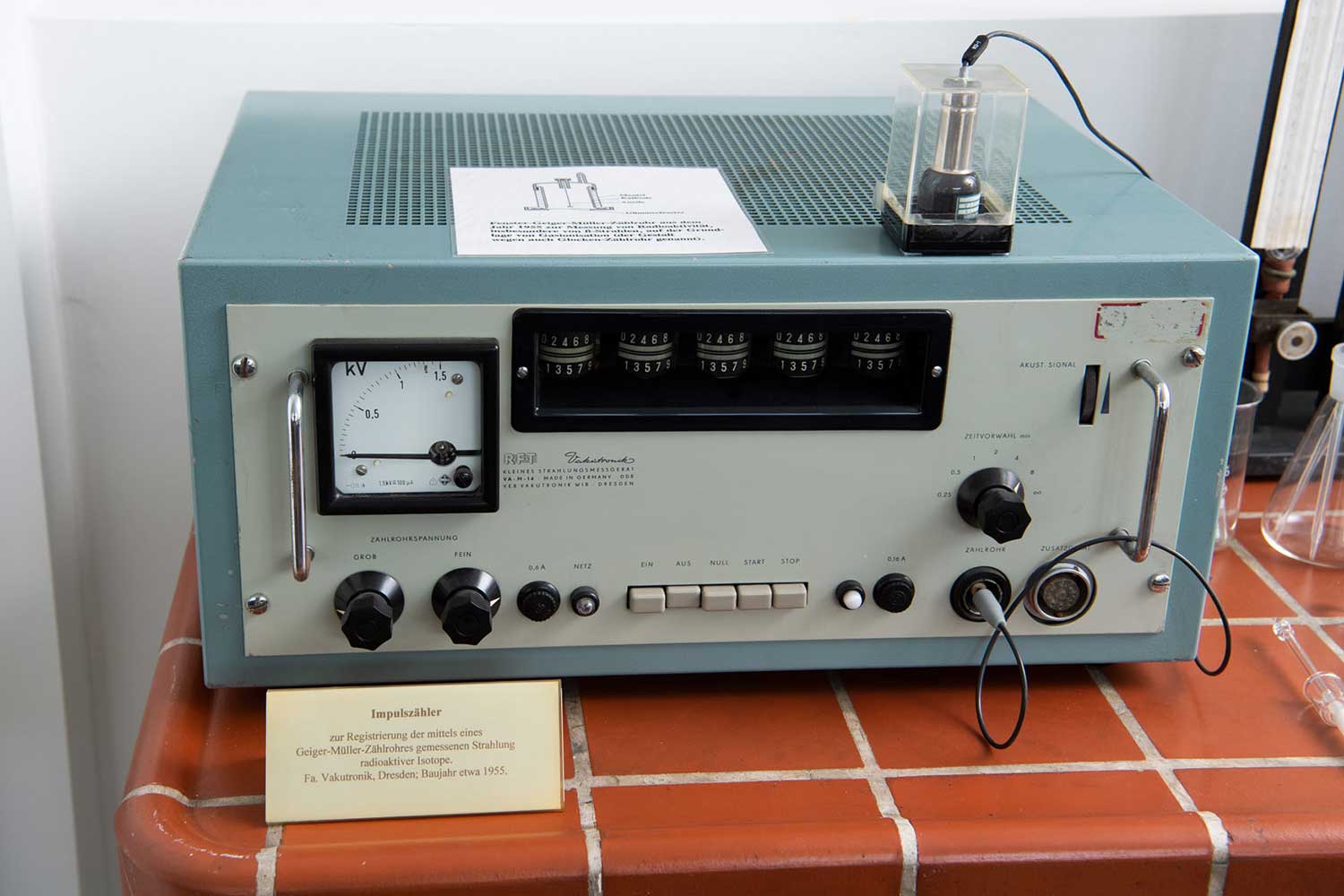3Pulse counter with Geiger-Müller counter tube
around 1955

Nikolai W. Timoféeff-Ressovsky and Max Delbrück irradiated fertilized fly eggs and larvae to study the resulting mutants. To record the radioactive isotopes and interpret the results of their experiments, it was crucial to know the amount of radiation that was being used. This was the purpose of the Geiger-Müller counter.
The instrument consists of a metal tube that is closed at both ends. A wire runs through the tube along the axis and leads out at one end through a glass insulator. The tube forms the cathode, the wire the anode, and a DC voltage is applied between them. A gas in the tube generates free electrons whenever radioactivity strikes it. The electrons travel to the anode, where they are detected as short pulses of current that are audible as crackling sounds from the speaker. The device is sensitive enough to detect the release of a single electron.
The Geiger-Müller counter was developed by Hans Geiger and Walther Müller at the University of Kiel in the 1920s. An innovation in the detector was to record particles or quanta of radiation with electrical impulses. The Geiger-Müller counter cannot distinguish different types of particles because their momentum is the same. However, it is very well suited to counting incoming particles or quanta, hence the name “counter”. This device was therefore crucial in confirming, for example, the theory that the number of mutations induced by radiation are proportional to the amount that flies have been exposed to. This fact led to the idea of genes as assemblies of physical molecules.